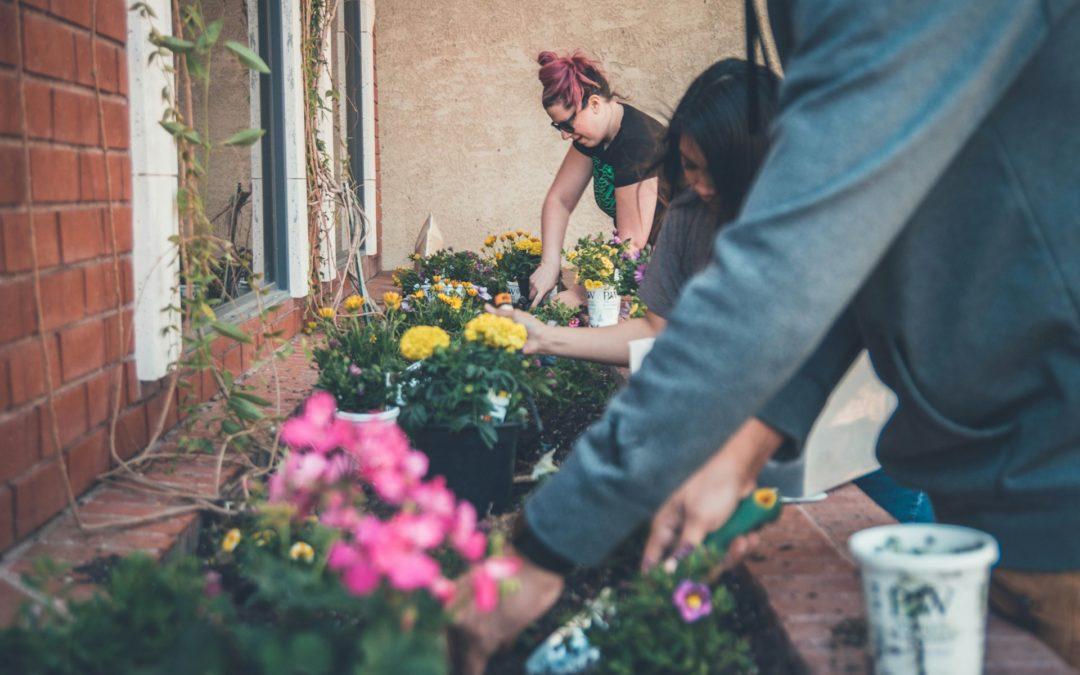Building a thriving community is an art that involves connecting people, fostering relationships, and creating spaces where individuals with shared interests can come together. In today’s interconnected world, community building takes on various forms, both online and offline, spanning diverse fields and interests. From professional associations to online forums, and environmental initiatives to parenting groups, these 20 top community-building examples exemplify the power of shared purpose and collaboration.
In this article, we’ll delve into the characteristics and significance of each, uncovering the unique ways they bring people together, foster inclusivity, and contribute to the fabric of interconnected communities. Join us on a journey through these remarkable instances of community building that span the realms of technology, culture, wellness, and beyond.
What is Community Building?
Top 20 Best Community Building Examples
1. Meetup Groups
Creating local meetups or online groups around shared interests is a fantastic way to cultivate a sense of community. By bringing people together who have common hobbies, passions, or professional interests, meetups create opportunities for face-to-face interactions or virtual discussions. These gatherings enable individuals to forge connections, share experiences, and build a network of like-minded individuals. The personal touch of meetups often fosters a stronger sense of community compared to purely digital interactions.
2. Online Forums
Platforms like Reddit or specialized forums serve as virtual meeting spaces where individuals can engage in in-depth discussions about topics they are truly passionate about. These forums provide a platform for people from diverse backgrounds to share their knowledge, opinions, and experiences. The anonymity or pseudo-anonymity often found in online forums can encourage open dialogue and the exchange of ideas. The sense of community arises from the shared interest that brings people together and the ability to connect with others who have similar passions.
3. Social Media Groups
Communities on platforms like Facebook or LinkedIn play a crucial role in connecting people globally. These groups are often centered around common interests, professional goals, or even specific niches within industries. The advantage of social media lies in its accessibility, allowing individuals to join conversations, share content, and participate in discussions regardless of geographic location. The sense of community here is amplified by the immediacy and real-time nature of social media interactions.
4. Podcasting Communities
Podcasts create unique communities around shared interests or themes. Listener engagement becomes a key factor in building this community. Whether through live Q&A sessions, social media discussions, or exclusive content for dedicated listeners, podcasts create a sense of belonging among their audience. The auditory nature of podcasts often results in a more intimate connection between hosts and listeners, enhancing the feeling of being part of a community with a shared appreciation for the podcast’s subject matter.
5. Crowdsourcing Platforms
Websites like Kickstarter or Indiegogo provide a platform for communities to support and fund projects they believe in. The communal aspect is evident in the collective effort to bring an idea to fruition. Contributors often feel a sense of ownership and pride in being part of a community that supports innovation and creativity. The success of a project is a shared achievement, further strengthening the bonds within the community.
6. Open Source Projects
Collaborative coding efforts in open-source projects go beyond the technical aspects. They also create a sense of belonging among developers. The shared goal of improving software for the benefit of all fosters a strong community spirit. Developers collaborate, share knowledge, and collectively contribute to a project, creating not just a piece of software but a community-driven ecosystem.
7. Book Clubs
Physical or virtual book clubs serve as spaces where individuals come together to discuss literature, share perspectives, and build connections. Beyond the love for reading, book clubs provide a platform for social interaction and the exchange of ideas. The shared experience of delving into the same literary work builds a unique bond among members, creating a sense of community that goes beyond the pages of a book.
8. Fitness Challenges
Online fitness challenges create a sense of community by encouraging participants to share their fitness journeys, progress, and setbacks. Communal support and motivation play a significant role in individual success. Participants often form connections through shared goals, fitness tips, and words of encouragement, turning a solitary activity into a community-driven pursuit of well-being.
9. Hackathons
Tech-oriented events like hackathons foster a sense of community through collaboration and problem-solving. Participants work together to overcome challenges, share their expertise, and create innovative solutions. The time-sensitive and high-energy nature of hackathons enhances team dynamics, creating a shared experience that strengthens the sense of belonging within the tech community.
10. Gaming Communities
Online multiplayer games have the unique ability to build strong communities centered around shared gaming experiences. Whether through in-game interactions, forums, or social media groups, gamers come together to discuss strategies, share achievements, and form lasting connections. The cooperative or competitive nature of gaming creates a sense of camaraderie among players who share a passion for the virtual worlds they inhabit.
11. Professional Associations
Industry-specific organizations play a crucial role in fostering a sense of community among professionals. These associations provide a dedicated platform for networking, allowing individuals within a particular industry to connect, share insights, and collaborate. The exchange of knowledge and experiences enhances professional development, and the shared understanding of industry challenges and advancements creates a strong bond among members. These associations are vital for staying abreast of industry trends and building lasting professional relationships.
12. Local Events
Town hall meetings, fairs, and festivals contribute significantly to the fabric of local communities. These events provide opportunities for face-to-face interactions, promoting a sense of unity among community members. Whether it’s discussing local issues at a town hall meeting or celebrating cultural diversity at a festival, these events foster connections and a shared sense of identity. The personal connections formed at local events contribute to the overall well-being and vibrancy of a community.
13. Online Courses and Webinars
Learning platforms offering online courses and webinars create communities centered around shared educational goals. Discussion forums and collaborative projects allow learners to interact, share insights, and support each other’s academic journeys. The virtual nature of these communities enables individuals from diverse backgrounds to come together, fostering a global exchange of knowledge. Believing that these online learning communities not only enhance the educational experience but also provide a valuable support system for individuals pursuing similar learning paths.
14. Nonprofit Initiatives
Volunteering for a cause is a powerful way to bring people together for a common purpose. Nonprofit initiatives create communities of individuals who are passionate about making a positive impact. The shared commitment to a cause fosters a sense of community and collective responsibility. Being part of such initiatives not only contributes to the betterment of society but also creates meaningful connections among volunteers. The camaraderie built through shared efforts for a cause is unparalleled.
15. Art and Creative Collaborations
Artists collaborating on projects or showcasing their work in a shared space contribute to the formation of a vibrant creative community. The exchange of ideas, techniques, and inspiration fosters a sense of camaraderie among artists. Whether through joint exhibitions, collaborative projects, or simply sharing a studio space, these interactions create a supportive environment for artistic expression. Such creative communities play a vital role in nurturing individual artistic growth and fostering a sense of belonging.
16. Parenting Groups
Communities for parents provide a valuable support system, offering advice, sharing experiences, and creating a sense of camaraderie. Parenting groups, whether online or local, become spaces where individuals facing similar challenges can connect and seek guidance. The shared journey of parenthood creates a bond among members, and the mutual support helps navigate the complexities of raising children. These communities are instrumental in providing emotional support and a sense of solidarity for parents.
17. Environmental Initiatives
Groups focused on environmental issues bring together individuals with a shared passion for sustainability and conservation. Whether it’s participating in clean-up campaigns or advocating for eco-friendly practices, these communities work towards a common cause. The shared commitment to environmental stewardship fosters a sense of community and collective responsibility for the planet. These initiatives not only contribute to positive environmental outcomes but also create a strong sense of interconnectedness among like-minded individuals.
18. Sports Fan Clubs
Enthusiastic sports fans often form clubs to support their favorite teams, creating a passionate community. These clubs provide a space for fans to share their excitement, discuss games, and organize events. The shared experience of victories and defeats builds a strong bond among members, creating a sense of camaraderie. Sports fan clubs enhance the overall enjoyment of being a fan by providing a community where the love for the game can be shared.
19. Culinary Communities
Cooking classes, food festivals, or online forums centered around food bring together individuals with a shared love for culinary experiences. These communities provide a platform for sharing recipes, and culinary tips and exploring diverse cuisines. The joy of cooking and savoring delicious meals creates a sense of community among food enthusiasts. Culinary communities not only celebrate the art of cooking but also facilitate cultural exchange through a shared passion for food.
20. Language Exchange Groups
Platforms that connect people wanting to learn different languages encourage cross-cultural interactions. Language exchange groups create communities where individuals can practice and enhance their language skills while connecting with speakers of other languages. The shared goal of language learning fosters a sense of camaraderie and cultural exchange. These groups contribute to breaking down linguistic barriers and promoting a more interconnected and understanding global community.
How to Build a Good and Strong Community?
Creating a robust and vibrant community is akin to nurturing a thriving garden: it requires careful cultivation, dedication, and a shared vision. At its core, building a strong community hinges on fostering connections, nurturing inclusivity, and encouraging active participation among its members.
Central to this endeavor is the establishment of open lines of communication. Clear, transparent communication serves as the lifeblood of any community, enabling the exchange of ideas, concerns, and aspirations. Whether through town hall meetings, digital platforms, or face-to-face interactions, the channels of communication must remain accessible and receptive to all voices.
Inclusivity stands as another cornerstone. A strong community values diversity and actively seeks to embrace individuals from varied backgrounds, perspectives, and walks of life. Embracing diversity not only enriches the community tapestry but also cultivates an environment where everyone feels valued and heard.
Moreover, a sense of belonging is crucial. Communities thrive when individuals feel a genuine connection and sense of ownership. Encouraging active participation, be it through volunteer initiatives, collaborative projects, or communal events, fosters a sense of belonging and reinforces the fabric of the community.
Building trust forms the bedrock of a strong community. Trust is earned through transparency, accountability, and mutual respect. Upholding shared values and demonstrating integrity in actions solidifies the foundation upon which trust flourishes.
Beyond these foundational elements, adaptability and resilience are vital. A community must be nimble in navigating challenges, whether they arise from external forces or internal dynamics. Flexibility and a willingness to adapt to changing circumstances enable communities to evolve and endure.
Ultimately, a strong community is a collective effort. It thrives on the commitment and active engagement of its members. By embracing diversity, fostering inclusivity, nurturing open communication, and cultivating trust, communities can flourish and stand as bastions of support, growth, and solidarity for all who call them home.
Characteristics of Community Building Process
Community building is a dynamic process that breathes life into neighborhoods, organizations, and societies at large. It’s a tapestry woven from the collective efforts, shared aspirations, and mutual support of individuals bound by a common goal or locale.
At its core, community building hinges on several key characteristics that fuel its growth and vitality. First and foremost, it thrives on inclusivity. It’s about creating spaces and fostering environments where everyone’s voice matters, where diversity isn’t just acknowledged but celebrated. Whether in a small local group or a sprawling urban landscape, the strength of a community lies in its ability to embrace differences, weaving them into a rich fabric of perspectives and experiences.
Communication is the lifeblood of any thriving community. Clear channels of dialogue, whether through face-to-face conversations or digital platforms, foster understanding and unity. Effective communication not only disseminates information but also builds bridges, enabling individuals to connect, collaborate, and collectively shape their shared future.
Trust forms the bedrock of strong communities. It’s cultivated through consistent actions, integrity, and reliability. When trust permeates a community, it fosters a sense of belonging and safety, allowing individuals to contribute freely and confidently, knowing their efforts are valued and respected.
Empowerment is another cornerstone. Community building is not a spectator sport but an inclusive endeavor where individuals are empowered to take ownership and initiative. Whether through leadership roles, skill-sharing initiatives, or grassroots projects, empowering members fosters a sense of agency and investment in the collective well-being.
Adaptability and resilience are essential traits of successful community building. Challenges and changes are inevitable, but communities that thrive are those capable of adapting to evolving circumstances, learning from setbacks, and bouncing back stronger.
Ultimately, the essence of community building lies in its ability to create a shared sense of purpose and belonging. It’s a collaborative journey where the whole is greater than the sum of its parts. When individuals come together, pooling their strengths, embracing differences, and working towards a common vision, the result is a vibrant, resilient, and inclusive community—one that stands as a testament to the power of unity in diversity.
Importance of Community Buildings
Social Support
Communities provide a crucial support system, offering encouragement, advice, and empathy. In times of need or celebration, having a community to lean on enhances individual well-being.
Shared Resources
Within communities, individuals often share resources, knowledge, and skills. This collaborative sharing fosters a culture of mutual assistance and can lead to collective growth.
Sense of Belonging
Community building creates a sense of belonging and identity. Feeling connected to a group with shared values or interests contributes to a person’s overall happiness and mental well-being.
Networking Opportunities
In professional settings, communities offer valuable networking opportunities. Industry-specific or interest-based communities facilitate the exchange of ideas, career advice, and potential collaborations.
Collaboration and Innovation
Collaborative efforts within a community often lead to innovation. Whether in business, technology, or the arts, diverse perspectives and collective problem-solving can spark creativity and drive progress.
Cultural Exchange
Communities bring together individuals from diverse backgrounds, fostering cultural exchange. This exposure to different perspectives promotes understanding, tolerance, and a more interconnected global society.
Personal Growth
Being part of a community encourages personal growth by exposing individuals to new ideas, challenges, and experiences. The support and encouragement from a community can inspire individuals to pursue their goals.
Resilience and Crisis Management
Strong communities exhibit resilience during challenging times. Whether facing economic hardships, natural disasters, or other crises, communities can come together to provide collective support and aid in recovery efforts.
Enhanced Communication
Communities facilitate open and effective communication. The exchange of ideas, information, and feedback within a community strengthens relationships and ensures that everyone feels heard and valued.
Social Accountability
Communities often foster a sense of social accountability. Whether in terms of environmental stewardship, ethical business practices, or personal development, individuals within a community may feel motivated to uphold certain standards.
Celebration of Diversity
In diverse communities, people celebrate differences and learn from each other. This celebration of diversity contributes to a richer and more inclusive community fabric.
Increased Happiness and Well-being
Numerous studies indicate that individuals who feel a sense of community tend to be happier and experience a higher quality of life. The social connections formed within a community contribute significantly to overall well-being.
Community building is a fundamental aspect of human experience that fulfills innate social needs and plays a crucial role in creating a more interconnected and harmonious society. Whether on a personal, professional, or societal level, the benefits of community building extend far beyond the immediate connections formed, influencing the broader fabric of relationships and societal dynamics.
Read Also: Top 20 Examples of Moral Development
Read also: 30 Best Cultural Transmission Examples
The Most Popular on BitGlint

40 Social Dilemma Examples in the World & Real Life
Social dilemmas are everywhere. They shape the choices we make at work, in our communities, and even on a global...

30 Favor Examples & Definition
Doing a favor means helping someone without expecting anything in return. It’s an act of kindness that can strengthen...

30 Naivety Examples & Definition
Naivety is something most people experience at some point in their lives. It often starts in childhood, but for some,...

20 Chronology Examples & Meaning
Chronology is something we use more than we realize. It shows up in conversations, in how we remember the past, and in...

30 Wishful Thinking Examples & Meaning
Wishful thinking is something we all do at some point. You hope things will turn out fine—even if there’s no real...

20 Examples of Gravity & What Gravity Really Is
Gravity is one of the most important forces in the universe, but many people don’t fully understand what it really is...

20 Examples of Secondary Consumers in the Food Chain
Secondary consumers are animals that eat other animals—usually herbivores that feed on plants. They’re an important...
Get Inspired with BitGlint

